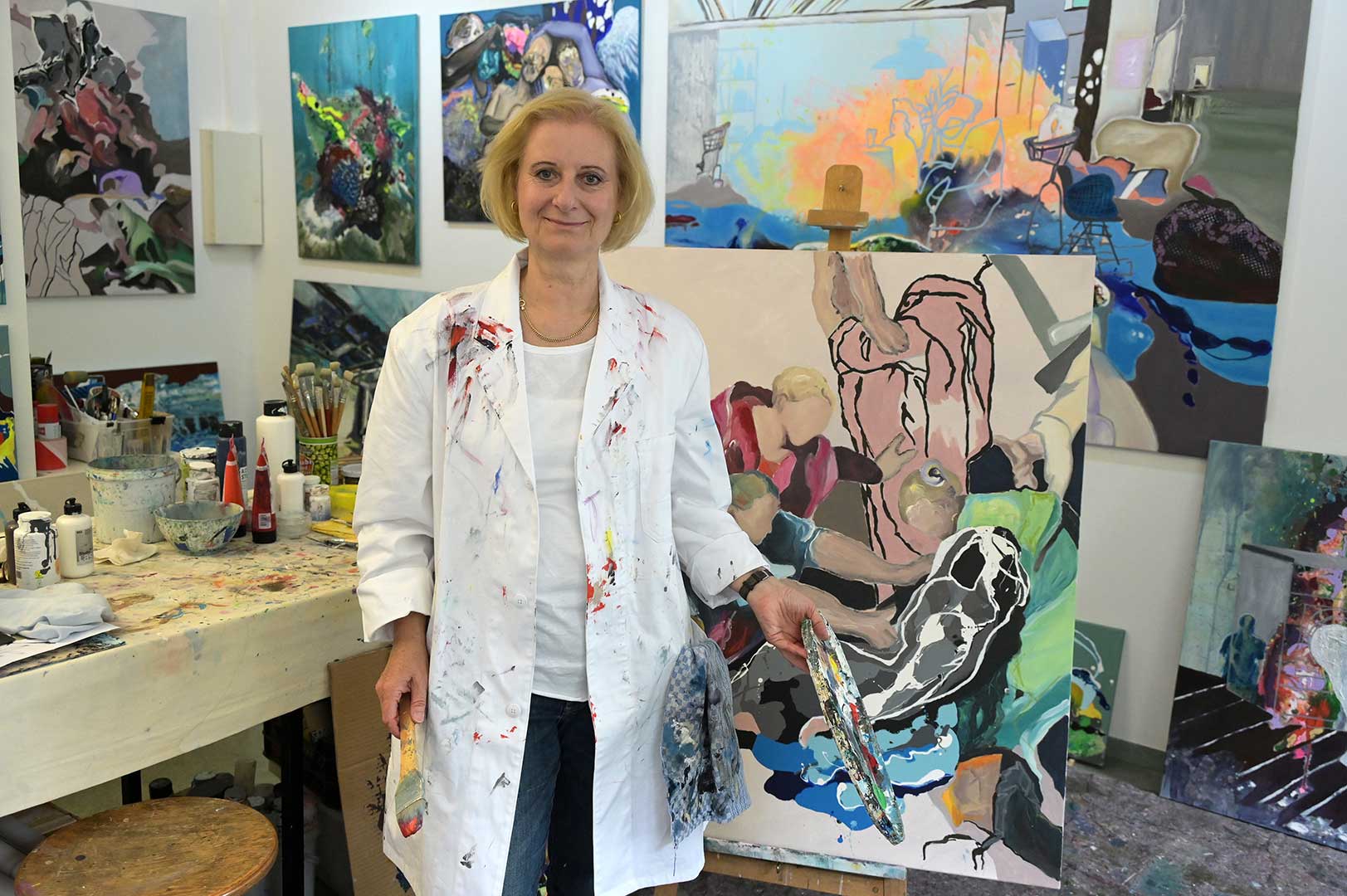Creation Process

The works of artist Petra Kost arise from a rare interplay of controlled mastery of materials and a radical openness. Each canvas begins with vehement gestures: liquid acrylic, occasionally oil, bitumen, or pigment additives are poured onto the canvas, hurled, and withdrawn. What initially appears to be impulsive terrain already holds poetic potential, the form of which only crystallizes under her precise observation.
In this grey area between chance and intention, the artist unfolds a multi-layered pictorial space. She reads the resulting structures like a panorama of clouds - figures, fragments, and atmospheres emerge, evaporate, and re-emerge. The process constantly oscillates between the unconscious and the conscious: moments of spontaneous action are followed by a contemplative detachment in which composition and thematic condensation are reflected upon.
As soon as a visual trace asserts itself, the “peeling out” begins: glazes in acrylic and oil, drawn lines in chalk, ink, or charcoal condense the initially amorphous ground into nuanced scenarios. Figurative elements intervene organically in the original random structures, preserving their original energy. The result is an exciting coexistence of chaos and order, of precise placement and expressive gesture—a controlled oscillation that gives each work its unmistakable inner dynamic.
Formally, this dialog is reflected in the juxtaposition of fine lines and two-dimensional explosions of color, translucent overlays, and impasto densification. In terms of content, the works negotiate elementary dualities: loneliness versus security, structure versus dissolution, and beauty versus destruction. It is precisely the artist's ability to maintain these poles in a fragile balance that gives her paintings their special appeal and long-lasting effect.
By revealing the process behind the work, the artist invites the audience to trace the creation of the painting - every layer, every gesture, every break. This transparency not only lends the paintings aesthetic depth, but also a performative dimension: the painting becomes a documented event, visible evidence of an intensive act of artistic research. For collectors, this means a work whose material and non-material value is derived from the sum of its layers, its decisions, and its open questions. This is where the lasting increase in value lies: in the authenticity of a process that brings the invisible to the surface and creates a unique, unmistakable pictorial cosmos.